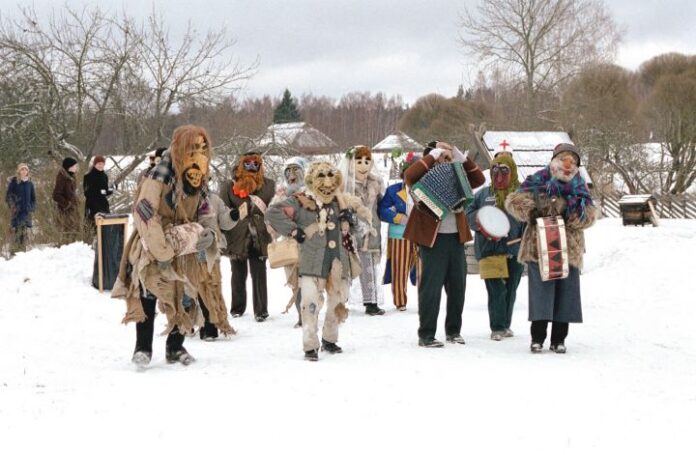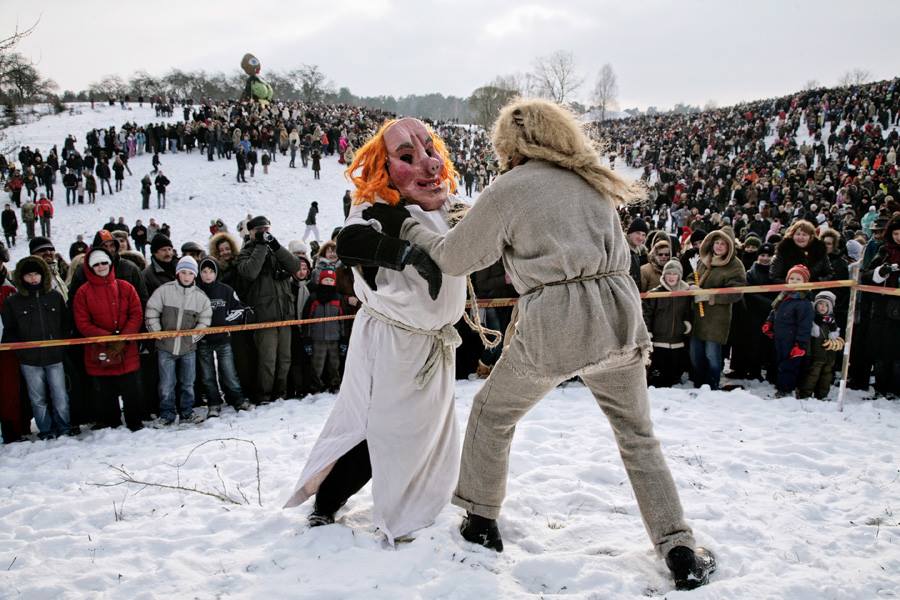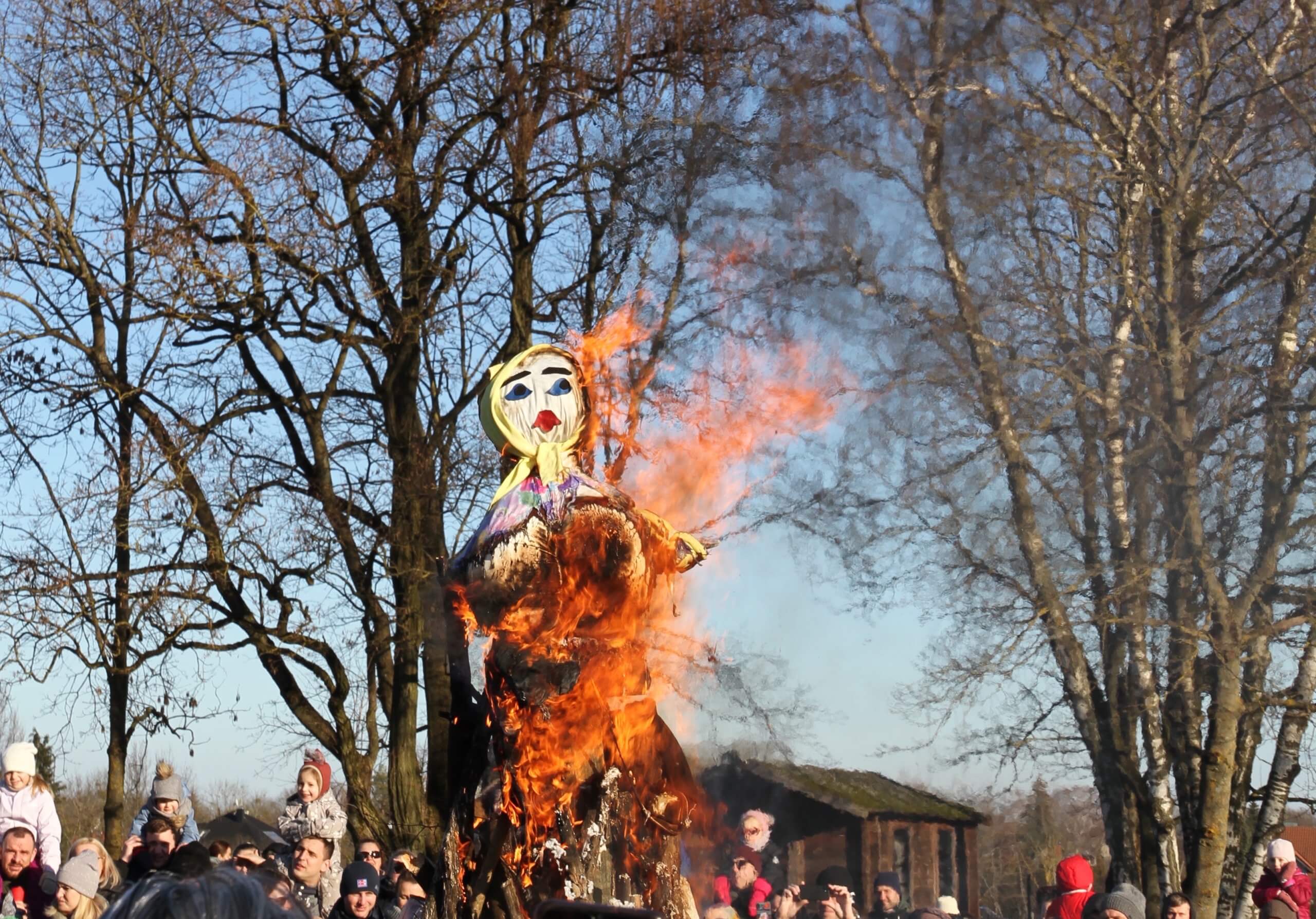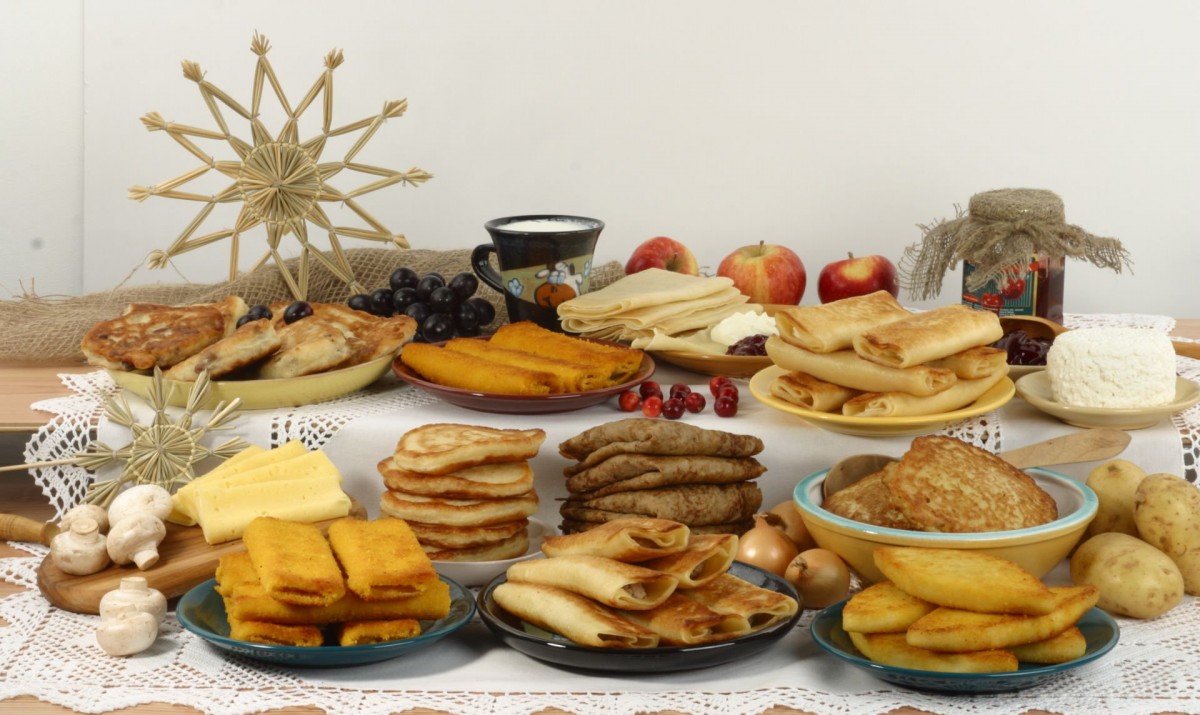
Užgavėnės (Shrove Tuesday) is a festival that takes place in Lithuania during the seventh week before Easter (Ash Wednesday). The name means “the time before Lent”, but literally comes from the verb “užsigavėti” to eat well before Lenten fasting. The celebration corresponds to Roman Catholic holiday traditions in other parts of the world, such as Mardi Gras, Shrove Tuesday, and Carnaval. The French call this day Mardi Gras (“Fat Tuesday”) and not only repent their sins on that day but eat plenty of meat and different fatty foods. In many countries “Fat Tuesday” is celebrated with carnivals. The most famous of them are in New Orleans and Rio de Janeiro. In Catholic countries, the day marks the end of the season between Christmas Day and Ash Wednesday, when there is no fasting and eating meat is allowed.
 In Lithuania Užgavėnės is a unique event. Although its origins were pagan, with rituals of chasing away winter and welcoming spring, today they are closely connected to Christianity. It is the day to eat heartily before the fasting required throughout Lent until Easter. In the Catholic faith it is an ordinary Tuesday, but in the peasant tradition, it was one of the most anticipated festivals.
In Lithuania Užgavėnės is a unique event. Although its origins were pagan, with rituals of chasing away winter and welcoming spring, today they are closely connected to Christianity. It is the day to eat heartily before the fasting required throughout Lent until Easter. In the Catholic faith it is an ordinary Tuesday, but in the peasant tradition, it was one of the most anticipated festivals.
The Saturnalias celebrated by the Romans and the current carnivals in Venice and Germany with their masquerading participants are city events, whereas in Lithuania Užgavėnės originated in the country, and was tied to the agrarian culture. Costumes worn by villagers were different from those of city-dwellers. In the country, people made wooden masks and dressed as devils, witches and various animals. The peasants performed rituals to connect with their ancestors and to guarantee a good harvest, according to ethnologist Dr. Arūnas Vaicekauskas. People gathered at the churches, and masqueraders visited their neighbours. The event is celebrated in a merry and playful spirit, with rituals reflecting ancient customs when the Earth was “urged” to wake up from winter and prepare for the new cycle of life (springtime).
Užgavėnės is the day before Ash Wednesday, when an effigy of winter (usually named Morė, associated with the personification of winter as Slavic goddess Marzanna) is burnt. A major element of the holiday, meant to symbolize the defeat of winter in the Northern Hemisphere, is a staged battle between the fat Lašininis personifying winter and skinny Kanapinis (“hemp man”) personifying spring. Devils, witches, goats, the grim reaper, and other frightening characters appear in costumes during the celebrations. The participants and masqueraders dance and eat the traditional holiday dish of pancakes with a variety of toppings.
“Žiema, žiema, bėk iš kiemo!” (Winter, winter, out of my yard!) is the traditional chant to chase out the cold season.
 Užgavėnės would not be complete without feasting on pancakes, porridge and meat dishes, and the ritual burning of Morė. It is believed that burning this stuffed female effigy is a form of cleansing, and prevents disasters. Throwing pancakes into the air is very old Baltic ritual signifying sacrifice to the Sun to invite her to come back soon, to warm up the Earth and take away winter. In Lithuania it was even a custom to decorate a tree with pancakes.
Užgavėnės would not be complete without feasting on pancakes, porridge and meat dishes, and the ritual burning of Morė. It is believed that burning this stuffed female effigy is a form of cleansing, and prevents disasters. Throwing pancakes into the air is very old Baltic ritual signifying sacrifice to the Sun to invite her to come back soon, to warm up the Earth and take away winter. In Lithuania it was even a custom to decorate a tree with pancakes.
In one area of the country called Lithuania Minor, where the population is traditionally Lutheran, a different dish is served on Shrove Tuesday. Šiupinys – a stew made of beans and pork (pig ears, tails, and other parts) was one of the most important symbols of Shrove Tuesday for the Lithuanians in that area, who were called “lietuvninkai”. The event, resurrected in 1927 in Klaipėda, became a social gathering and a cultural event for the community, and continued in the diaspora.
Lithuanians in general, both in Lithuania and abroad, still love their pancakes. This must be true because even a quick online search reveals a great variety of pancake recipes based on yeast, peas, buckwheat, blood, mushrooms, carrots, potatoes, rice, oats, cream of wheat… and of course fillings of many kinds. Here are a few simple recipes which may be familiar:
 Potato Pancakes (Bulviniai blynai)
Potato Pancakes (Bulviniai blynai)
1 egg
4 potatoes
Yeast
Salt, oil or shortening
(One serving)
Grate potatoes, add egg and yeast, mix well. Fry spoonfuls in hot oil. Eat with spirgučiai (fried chopped onions and bacon) or sour cream.
For a larger quantity, use 4 potatoes, ½ cup chopped onion, 1 egg, 2 tablespoons of flour, salt to taste, oil for frying.
Sweet Pancakes (Saldūs blynai)
1 egg
1 tablespoon flour
1 tablespoon sour cream
Salt, sugar, oil, jam
Beat the egg with salt and sugar. Add sour cream and flour, mix well. Fry in oil on low heat. Serve with jam and sour cream.
Carrot Pancakes (Morkų blynai)
This is a prime example of Lithuanian recipe presentation, with no amounts indicated. The expectation is that you should know, or it’s up to you.
Carrots
Egg
Cottage cheese
Flour
Sugar, salt, oil
Peel carrots and grate finely. Add egg, cottage cheese, sugar, salt. Mix well. Add flour and mix until the batter is like sour cream in texture. Fry in oil.





























